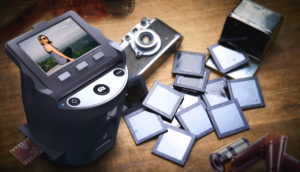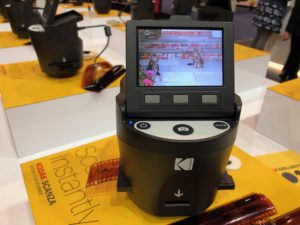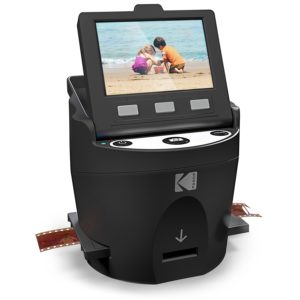
Photographers can be considered to be history’s artists. Observers, painting, sketching and documenting humanity’s vast exploration of life events. Photographic stories such as V-J Day in Times Square (Photographer Alfred Eisenstaedt), National Geographic’s Afghan Girl (Photographer Steve McCurry) or even the Tank Man (Photographer Jeff Widener) simply transcend distance and time. Each of these photos evoke emotions years after the event. The wonderful thing about the art of photography is that you don’t have to be a Pulitzer Prize winner in order to touch the lives of others. Each of us are empowered and armed with our digital phones and mobile devices.

To some today’s photography is a myriad of digital snaps which makes it nearly limitless in photo taking possibilities. Unfortunately what we gain from the endless storage capacity translates into the depth that was seen with traditional film and slide taking photography. Unlike traditional photographers who’s mistakes equate to costly developing costs, for modern photo experimentalists such as myself taking photos translates to a proliferation or reiteration of the same artistic mistakes. When I look at my father’s slides and films, although the technology is different I can see the difference in many of the photo’s he has taken and hand developed. As observed with many others, my father has documented several generations of family history. Whether it be our vacations, scenic and self-historical family events, he has several hundreds (or perhaps thousands) of Kodachrome slides and films.
Looking to preserve family photos I have embarked on a journey to find a high resolution scanner that will not only digitize his film and slides but will also persevere and translate the original work. There are a lot of devices on the market that will transfer slides and negatives at a fairly quick rate. Many of them are very fast, but what you gain in speed, you lack in quality. Having tried numerous film and slide scanner’s I have continuously run into the problem of color, brightness and contrast translation. It was fairly obvious to the naked eye when looking at the post scan that the colors on the film was noticeably different than what was scanned.

Our friends at Kodak know about photography and have released the KODAK Scanza Digital Film & Slide Scanner. Consumers can scan and digitize 35mm, 126, 110, Super 8 and 8mm film negatives and slides at 14/22 megapixel resolution. What I like about this product is that you do not need to have a degree in computer science or a photography background to use this device. It is something that my dad could use. Simply load your film or slides into the adapter and insert it directly into the Scanza Scanner until you hear a click. Scanning and editing of the photos are done on a (Tilt-up) 3.5” color TFT LCD screen.
To scan, simply press the soft function key under the capture icon on the screen to go to the capture mode. Your loaded image will appear on the LCD screen. To edit,use onscreen tools (i.e. rotate, flip, adjust color and brightness settings). The Scanza Scanner features an intuitive user interface that allows users to enhance the image quality of their film, including the ability to adjust RGB levels and brightness for ideal image coloring. The image can be saved directly on to a SD card (not provided) or directly to your PC or MAC.

The KODAK Scanza Digital Film & Slide Scanner comes with three different adapter trays for working with different film sizes (35mm, 126, 110, Super 8, and 8mm). The film is scanned into 14-megapixel JPEG files. Having seen a demonstration of the KODAK SCANZA Digital Film & Slide Scanner I was impressed with the ease of use and advanced colorization toolset.
I can’t wait to put the KODAK Scanza through its paces digitizing our slides and film photos. A noted pioneer of photographic history, Kodak is looking to try to preserve each of our family’s precious memories.
Features and Specifications
- Dimensions: 5.1 x 4.7 x 4.5 inches
- Weight: 1.96 pounds
- Screen: 3.5” color tilting TFT LCD
- Compatibility: 35mm, 126, 110, Super 8 & 8mm Negatives & Slides
- File format: JPEG
- Compatibility: PC/MAC®
- Power source:
- AC adapter,
- USB DC5V output
- Sensor: 14MP CMOS sensor
- External memory: SD™/SDHC™ memory card (not included)
- Interfaces:
- USB (2.0) port,
- SD™ card slot,
- TV-out (3.5mm phone jack),
- HDMI port
- Features:
- Resolution Adjustment: Toggles between 14 or 22 megapixels
- RGB Adjustment
- Brightness Adjustment
- Gallery Mode
- USB Upload

For more information or to acquire the: KODAK SCANZA Digital Film & Slide Scanner
About Kodak
Kodak is a technology company focused on imaging. We provide – directly and through partnerships with other innovative companies – hardware, software, consumables and services to customers in graphic arts, commercial print, publishing, packaging, entertainment and commercial films, and consumer products markets. With our innovative solutions portfolio and highly trusted brand, Kodak is helping customers around the globe to sustainably grow their own businesses and enjoy their lives.
